
One of the limitations of using sunlight to create fuels like hydrogen has been the high cost of producing the semiconductors and catalysts needed. UW–Madison scientists are making progress on an answer. Credit: Bryce Richter
Researchers at the University of Wisconsin-Madison have combined cheap, oxide-based materials to split water into hydrogen and oxygen gases using solar energy with a solar-to-hydrogen conversion efficiency of 1.7 percent, the highest reported for any oxide-based photoelectrode system.
Generating electricity is not the only way to turn sunlight into energy we can use on demand. The sun can also drive reactions to create chemical fuels, such as hydrogen, that can in turn power cars, trucks, and trains.
The trouble with solar fuel production is the cost of producing the sun-capturing semiconductors and the catalysts to generate fuel. The most efficient materials are far too expensive to produce fuel at a price that can compete with gasoline.
“In order to make commercially viable devices for solar fuel production, the material and the processing costs should be reduced significantly while achieving a high solar-to-fuel conversion efficiency,” says Kyoung-Shin Choi, a chemistry professor at the University of Wisconsin-Madison.
In a study published in the journal Science, Choi and postdoctoral researcher Tae Woo Kim combined cheap, oxide-based materials to split water into hydrogen and oxygen gases using solar energy with a solar-to-hydrogen conversion efficiency of 1.7 percent, the highest reported for any oxide-based photoelectrode system.
Choi created solar cells from bismuth vanadate using electrodeposition — the same process employed to make gold-plated jewelry or surface-coat car bodies — to boost the compound’s surface area to a remarkable 32 square meters for each gram.
“Without fancy equipment, high temperature or high pressure, we made a nanoporous semiconductor of very tiny particles that have a high surface area,” says Choi, whose work is supported by the National Science Foundation. “More surface area means more contact area with water, and, therefore, more efficient water splitting.”
Bismuth vanadate needs a hand in speeding the reaction that produces fuel, and that’s where the paired catalysts come in.
While there are many research groups working on the development of photoelectric semiconductors, and many working on the development of water-splitting catalysts, according to Choi, the semiconductor-catalyst junction gets relatively little attention.
“The problem is, in the end you have to put them together,” she says. “Even if you have the best semiconductor in the world and the best catalyst in the world, their overall efficiency can be limited by the semiconductor-catalyst interface.”
Choi and Kim exploited a pair of cheap and somewhat flawed catalysts — iron oxide and nickel oxide — by stacking them on the bismuth vanadate to take advantage of their relative strengths.
“Since no one catalyst can make a good interface with both the semiconductor and the water that is our reactant, we choose to split that work into two parts,” Choi says. “The iron oxide makes a good junction with bismuth vanadate, and the nickel oxide makes a good catalytic interface with water. So we use them together.”
The dual-layer catalyst design enabled simultaneous optimization of semiconductor-catalyst junction and catalyst-water junction.
“Combining this cheap catalyst duo with our nanoporous high surface area semiconductor electrode resulted in the construction of an inexpensive all oxide-based photoelectrode system with a record high efficiency,” Choi says.
She expects the basic work done to prove the efficiency enhancement by nanoporous bismuth vanadate electrode and dual catalyst layers will provide labs around the world with fodder for leaps forward.
“Other researchers studying different types of semiconductors or different types of catalysts can start to use this approach to identify which combinations of materials can be even more efficient,” says Choi, whose lab is already tweaking their design. “With some engineering, the efficiency we achieved could be further improved very fast.”
Reference: “Nanoporous BiVO4 Photoanodes with Dual-Layer Oxygen Evolution Catalysts for Solar Water Splitting” by Tae Woo Kim and Kyoung-Shin Choi, 13 February 2014, Science.
DOI: 10.1126/science.1246913

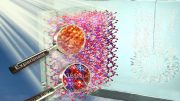

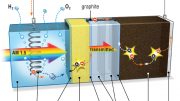
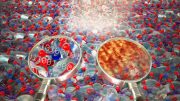
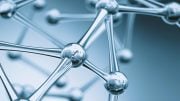
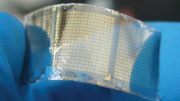

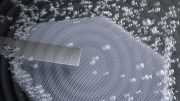
So we got an efficiency value 1.7% to play with and it’s 10x the land area that solar needs to produce power as GW of hydrogen instead of GW of electrical. This is in the same ballpark as producing biomass for energy.
If all US energy of 100XJ/yr was made only with PV, we are looking at using about 5% of the US land area, already pretty bad. So lets use 10x the land area to make hydrogen which can then be base load, no batteries needed.
So we have free sun, free land not doing much, cheap harvesting devices covering the country, what could possibly be better.